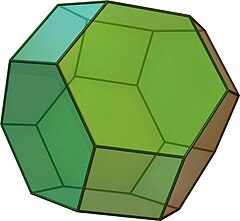Revano Satria’s thesis dissertation at the AA involves looking into cellular solids and manipulating them to be more responsive to external forces in their immediate environment. Cellular solids occur frequently in nature, examples include the more porous centers of human bone, the ever studied honeycomb or any kind of repetitive structure like cork, dense woods or sponges. Although cellular solids have been adopted as inspiration for engineering materials in recent years and are becoming more prevalent in construction, they fail to adopt the enhanced characteristics of these natural occurrences as they adapt to their surroundings based on variables exhibited on the entire system. Revano aimed to solve that issue, more images and ideas….
Perhaps the most famous example of cellular solids being adopted by design or construction is the Watercube Aquatics Center for the Beijing Olympics in 2008. The exterior shell of the building makes use of the Weaire-Phelan structure, a complex three-dimensional polyhedron structure which is said to be a packing logic attempting to exhibit the least amount of surface area possible. Instead of the traditional Kelvin model which used one standard volume and shape Truncated Octahedra repeated endlessly, it adopted two different shapes (Tetrakaidecahedron and Dodecahedron) which when coupled and repeated endlessly result in less surface area than the kelvin model while still using shapes of exact volume.
Whereas in the Beijing Aquatics Center the shapes and form of the structure look rather random and almost “bubble-like” they are indeed created of a regular grid of three-dimensional shapes and only appear that way because the grid was cropped to create a regular or rectangular building envelope. The shapes do not take into account exposure to sunlight, structural integrity, interior forces or internal forces, much like cellular solids do in nature. If the design was a more intelligent or informed one, perhaps the cells would be more open towards the top where forces are minimal and tighter and more compact in the bottom, where the weight of cells above exhibits force on the lower cells. This next level of advanced understanding is what Revano’s thesis aims to dive into. This is how cellular solids work in nature. In Revano’s own words:
“Even though the structure appears to be a random configuration, it actually uses just two different cells of equal volumes packed together, meaning that the structure does not take into account specific external forces from the surrounding environment. Thus the system is unable to represent the complexity and the adaptability of natural cellular solids.”
Revano’s design started with the creation of a linked network of functions. These functions were then divided into different types of zones, and connected with specific circulation links. A branching network algorithm was used in order to generate an adaptive network. This same logic was used and developed further to create what can be called a Hierarchical Branching Network algorithm. This algorithm allows the network system to memorize different variables of rules at each branching node and store them in different hierarchies. The first network function is then stored into the desired hierarchies and combined with the previous algorithm. This resulted in an initial set of points consisting of different functions and hierarchies with the ability to maintain connectivity and adapt to the insertion of new functions.
Each point in the hierarchical branching network represents a function; a Voronoi algorithm is used to generate compartmental spatial arrangements from these initial sets of points. However, the limitation of this system is its inability to divide each space into the required area necessary for each programmatic function. Therefore, a Cell Ratio algorithm was developed in order to readjust cell size and meet the specific spatial requirements for each cell.
Natural cellular solids have the ability to adapt to specific external forces within their surrounding environment. In this design, therefore, the sun is simulated in computational experiments as an external environmental force, generating site-specific geometry. Beginning with two-dimensional geometries, an algorithm was developed, called a Global Sun Exposure algorithm, which takes the data of the sun’s path on the site as a parameter in the generation of cell formation, minimizing sun exposure throughout the entire body of the object. The second algorithm, a Local Sun Exposure algorithm, calculates and compares the area of the cell bodies that have a high ratio of sun exposure with those with low sun exposure. The cells then readjust their positions toward the direction of the sun in order to minimize exposure.
Below are images of the alghorithms at work:
Following the generation of two-dimensional patterns, an experiment was conducted by overlaying a rectangular grid as partitioned space in order to understand the principles of transforming this data into three dimensions. Each grid cell was then transformed into a singular unit with a continuous surface, connected with each neighbouring cell’s wall. Two spatial zones were then generated by manipulating this continuous surface in both the horizontal and vertical planes. Based on specific programmatic requirements, cell depth and volume were then specified, creating a differentiated cellular solid structure. The resulting structure was generated with two phases of development0
1. cell formation and it adaptability toward specific environment data
2. generating a refined geometry established by specific building needs
This multiple-hierarchical system exploits natural cellular solid structures’ adaptivity and responsiveness while adhering to material and site-specific constraints.
Below are more images of the final developed project, plans, sections, etc.
Other articles that involve cellular development: Matsys Honeycomb Morphologies, Emergent Technologies Book
















Pingback: Sean Hanna and Timothy Schreiber PAN_07 Optimised Cellular Chair « Biomimetic-Architecture.com
Pingback: Gateway Structure for Brunel University by Minimaforms « Biomimetic-Architecture.com